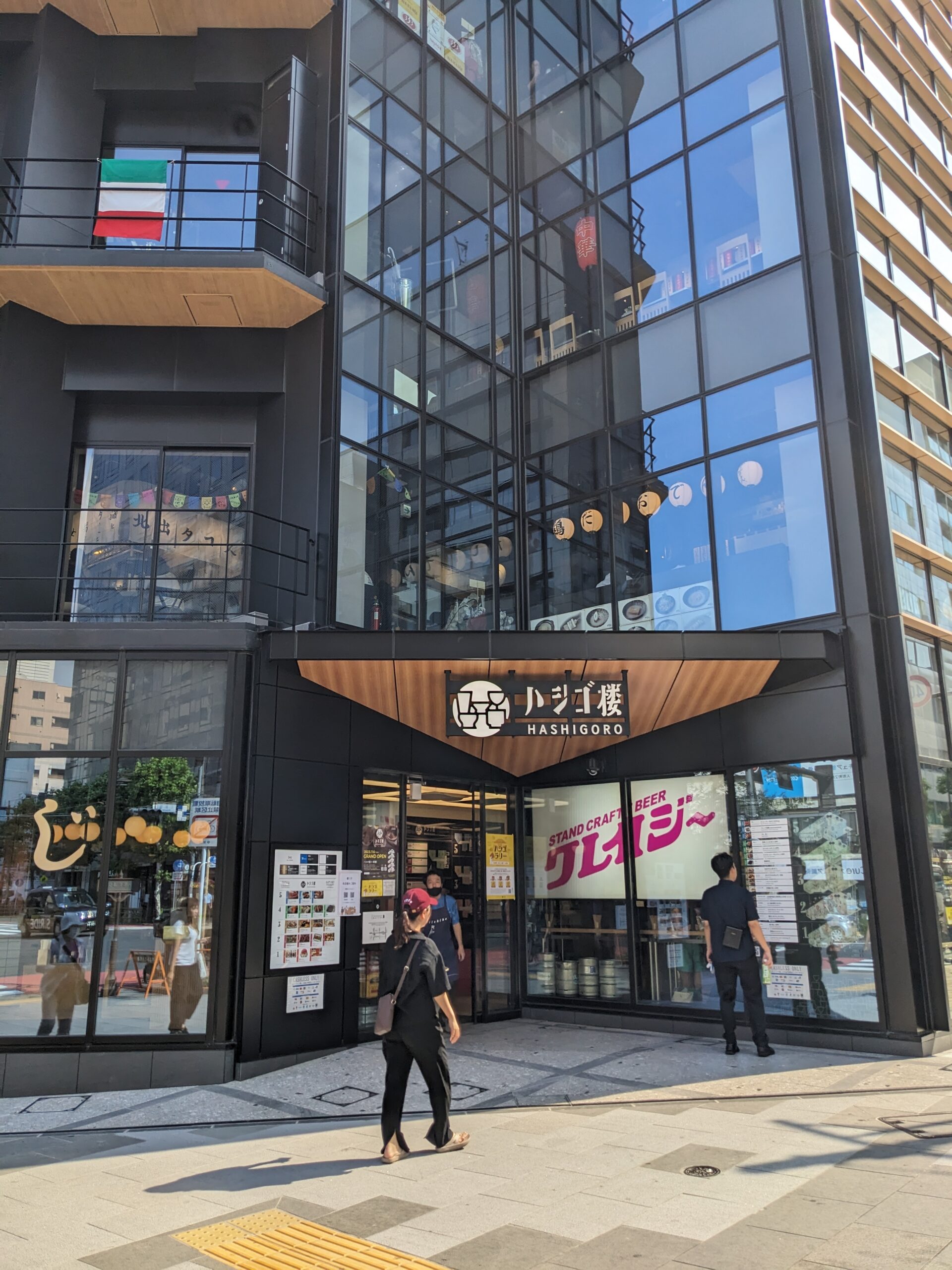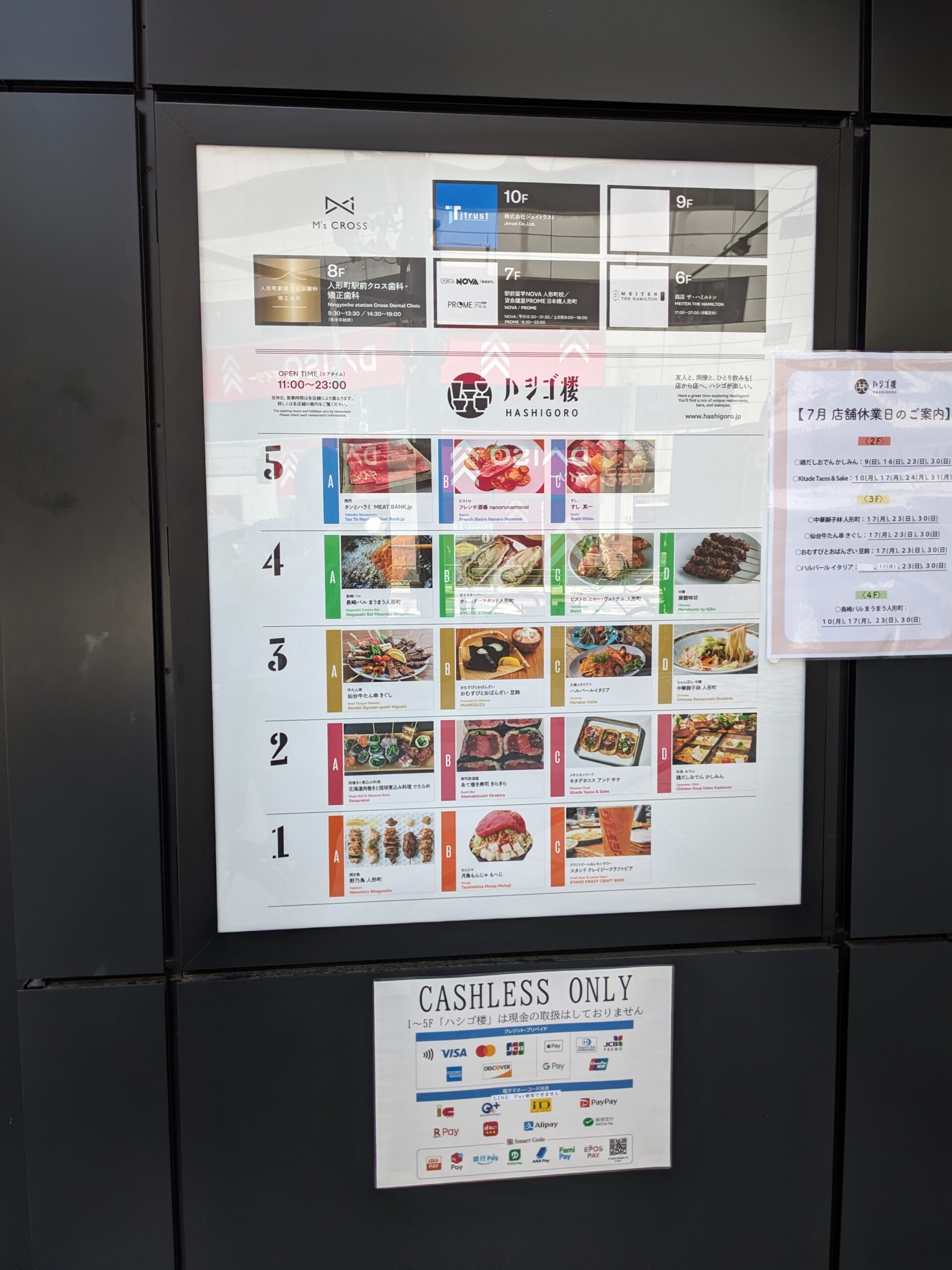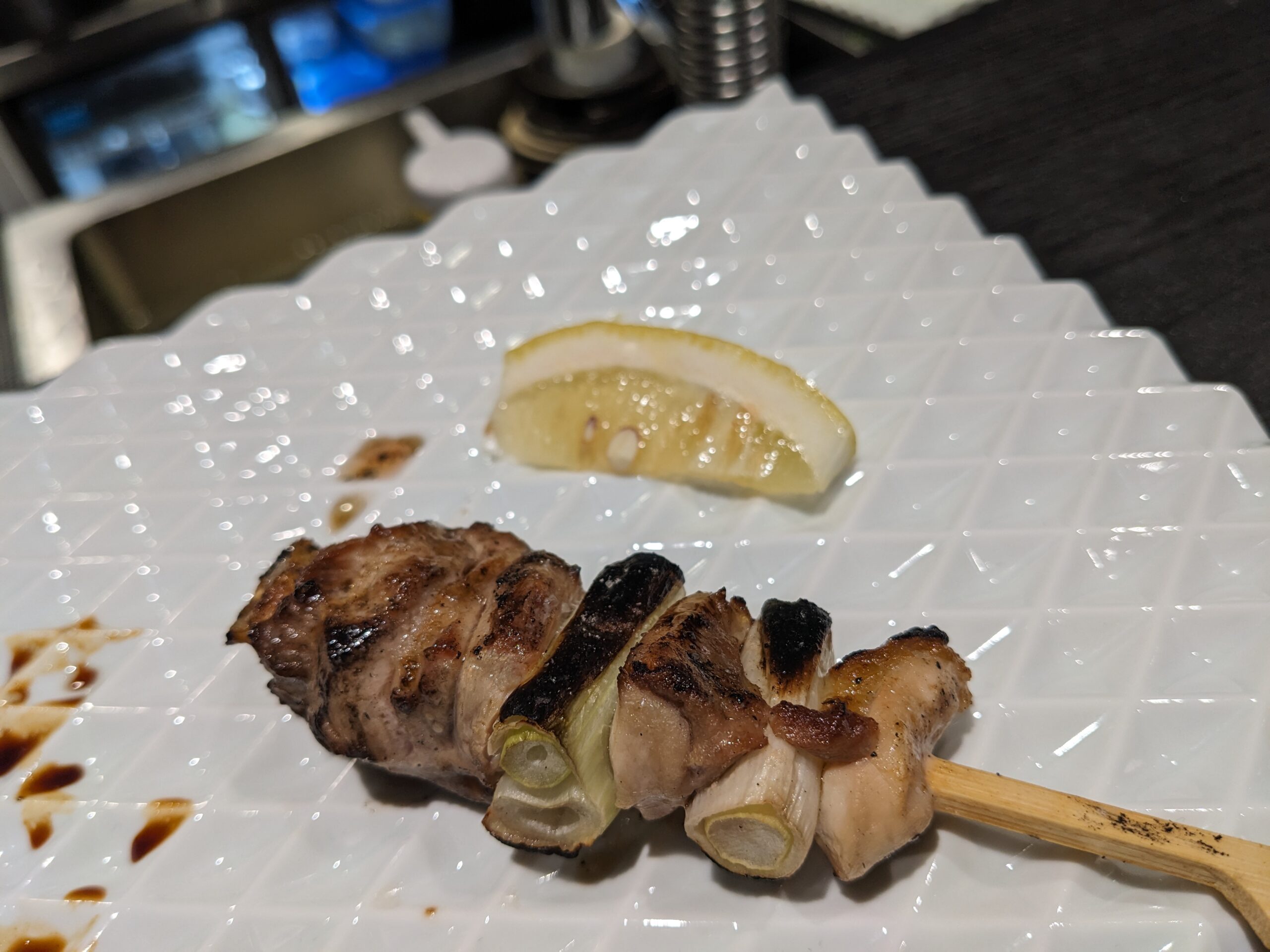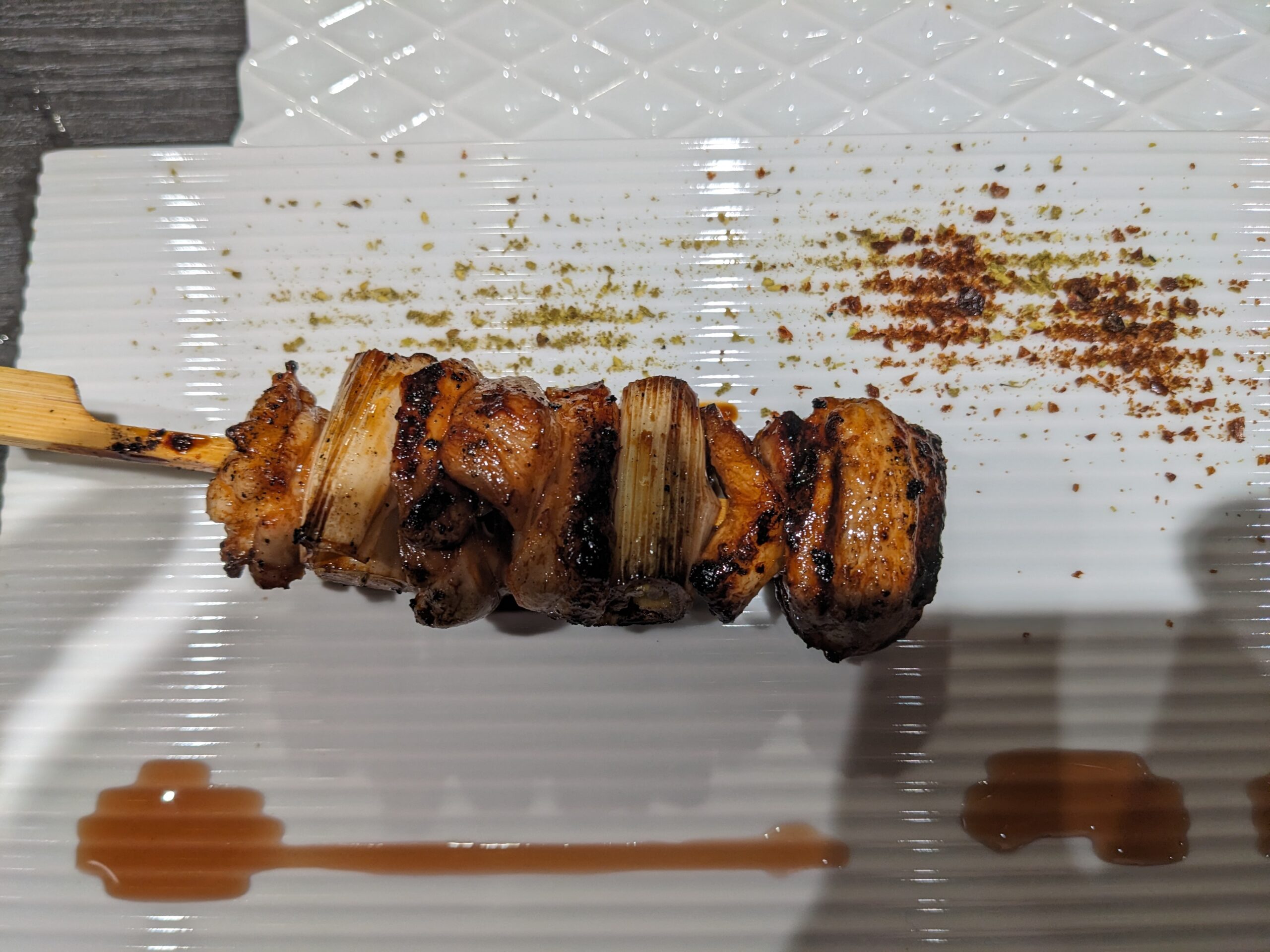Hashigoro はしご楼
A new building full of restaurants opened last week in Ningyōchō, Hashigoro. It’s on the corner of Kinza dori and Ningyōchō dori on the site of a former shoe repair shop and something else that I don’t ever recall seeing open for business. It’s a Mitsubishi project, which surprised me as Nihonbashi is mostly Mitsui territory. It consists of five floors of restaurants offering all sorts of Japanese and foreign cuisines, each restaurant more or less occupying one section of a more or less open floor plan. Keeping with what seems to be a trend, it is cashless only. And way too much ordering by QR code. QR codes cannot explain what it is you are thinking of ordering like a human wait person can do.


The day after the grand opening I decided to try Nonotori (野乃鳥, although it is spelled Nonotory on the sign), the yakitori shop, one of three yakitori restaurants that have opened in Ningyōchō in the past month. I was able to get a seat at the counter and proceeded to order, starting with the usual things, tsukune, momo, negima, tebasaki. I also ordered a skewer or kamo (duck), and a cup of sake. Everything was very good, especially the kamo which game with a cranberry and balsamic sauce.



The upper floors were packed, as was the first floor, so I decided to make it a short visit, and headed out.
My second visit to Hashigoro came two nights later, a Sunday. It was not nearly as crowded as previously, so it was much easier to move between floors and venues. I started with a look at the fifth floor, but since nothing struck my fancy I took the stairs down one floor where I knew there was a Vietnam bistro that looked interesting. I ordered abottle of Premium Malts and an order of soft-shell shrimp in a tamarind sauce and some coriander chicken, which were both good, and things I don’t normally find on menus in Tokyo. The coriander was actually cilantro, or as it is known in Japan, pakkuchi (in English, or at least in America, coriander refers to the seeds of the plant).
After I paid, I headed down one more flight of stairs to an Italian restaurant where I had a glass of red wine and an order of gorgonzola sauce XXX which turned out to be a lettuce salad topped with slices of chicken breast covered by a gorgonzola dressing. It wasn’t bad, but I thought the dressing was a bit on the thin and runny side.
So far so good. But time to drop down another level, this time for something more familiar, some tacos. Or more specifically, Kitade Tacos. I am a regular at their Commissary location where I often have a taco and a mug of on-site brewed craft beer (or I have a slice of pizza instead, or maybe even both). It turns out this latest shop is number five, all in the greater Nihonbashi area, if Kanda is included. I had a chicken taco, made with freshly ground corn from Hokkaidō. And rather than a beer I had a small glass of nihonshu. This shop’s menu offers quite a bit more items than Commissary’s does, including blue cheese and anchovy nachos, which sounds like something I just might become a fan of.
Hashigoro reminds me of a similar development over in Hiroo that is anchored by a Blue Bottle Coffee outlet with ten or twelve other restaurants serving everthing from sushi to yakitori to Chinese to yakiniku, and all in a similarly designed, open-space environment. Several times in the past few years I have been asked to write stories for Japanese food magazines on “hopping,” going from one place to another on foot for drinks and quick bites to eat. Hashigoro is ideal for hopping, and I noticed several other customers doing exactly that on my second visit.
A few nights later I returned to Kitade, this time with a friend. And this time I ordered the blue cheese anchovy nachos, which were great. We sampled some of the nihonshu selection, which may have been the first time I have ever eaten Mexican food with sake.
ne thing my friend and I noticed is that most of the staff didn’t seem very familiar with the menu, or about nihonshu as well. This was most likely because they were, for the most part, all quite young, probably high school students working part time jobs. The young and inexperience staff may also explain why they are using QR Codes; fewer opportunities to show one’s ignorance or to make mistakes. One of the things foreigners love about Japan is the quality of the service and the high level of knowledge chefs and even wait staff have about their dishes. QR codes eliminate all that, which is just one of the reasons I detest QR codes.
I am betting that by mid-August Hashigoro will have worked most of the kinks out of their operation. I am also betting that it will remain a popular attraction for the neighborhood.